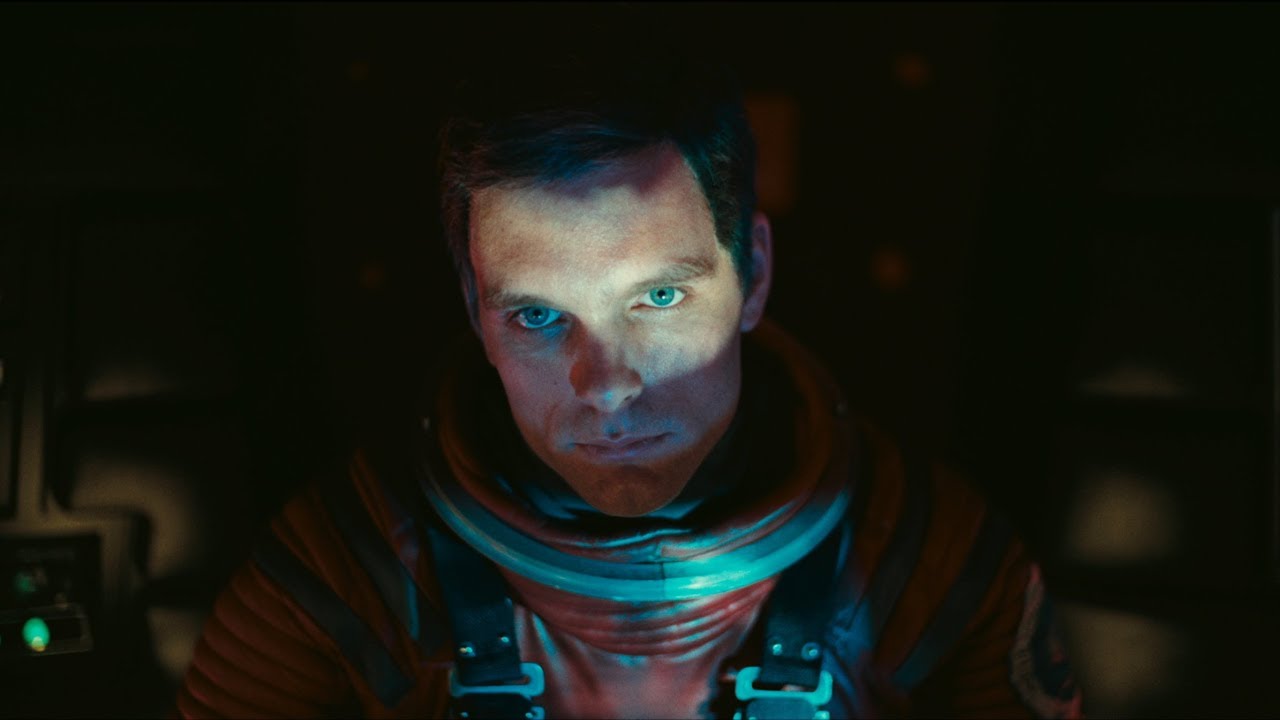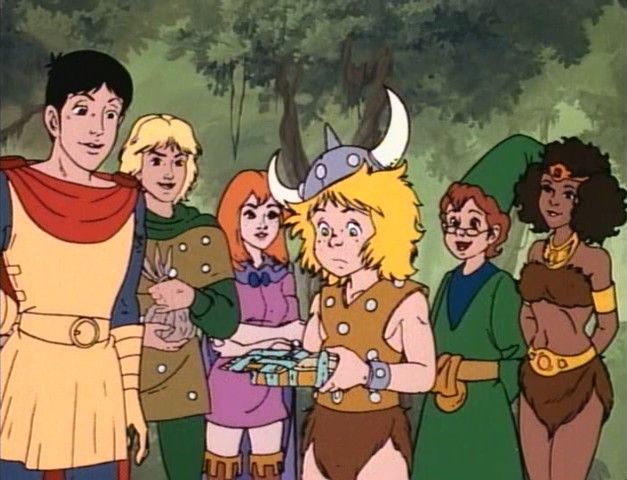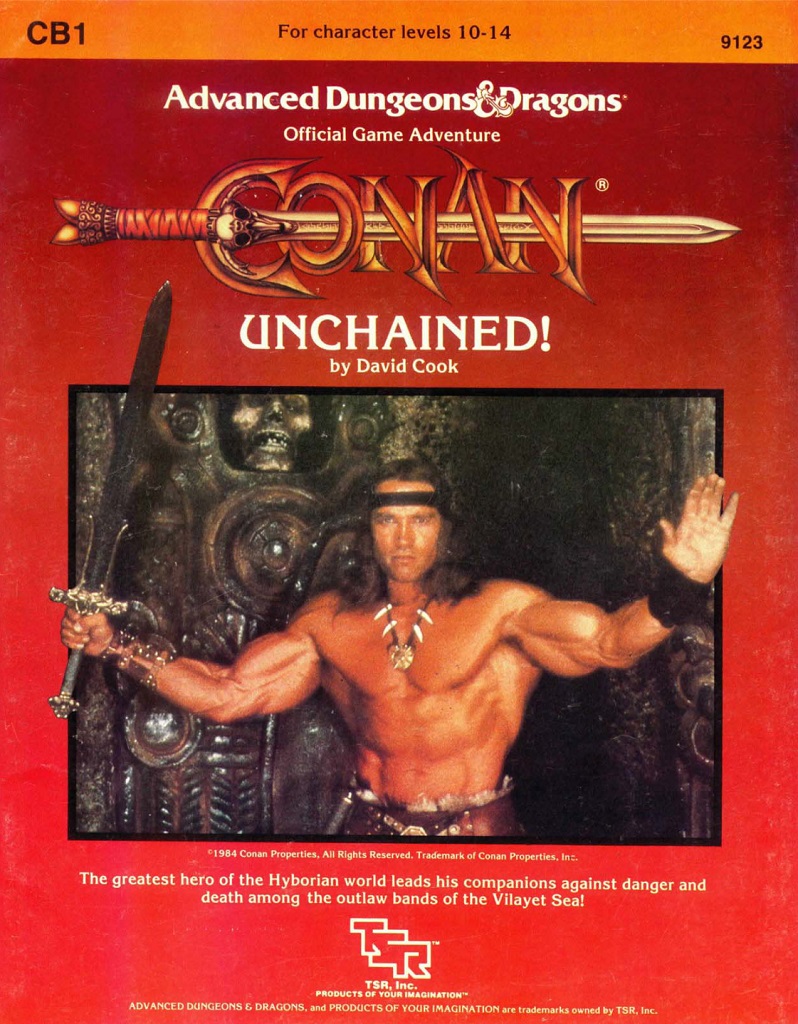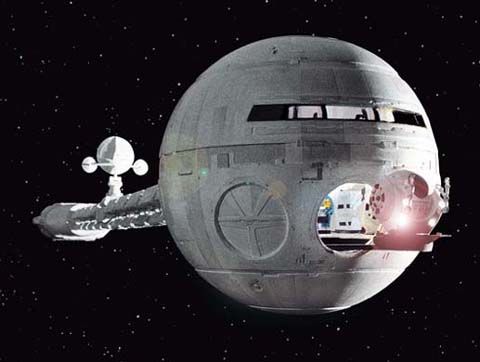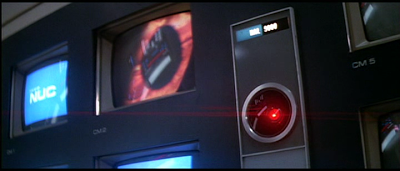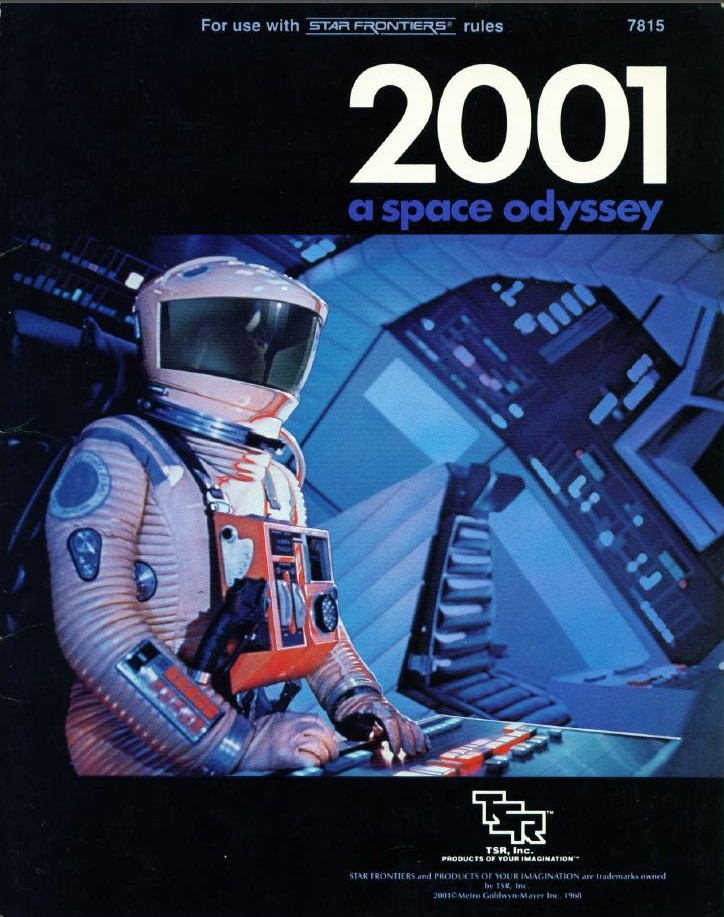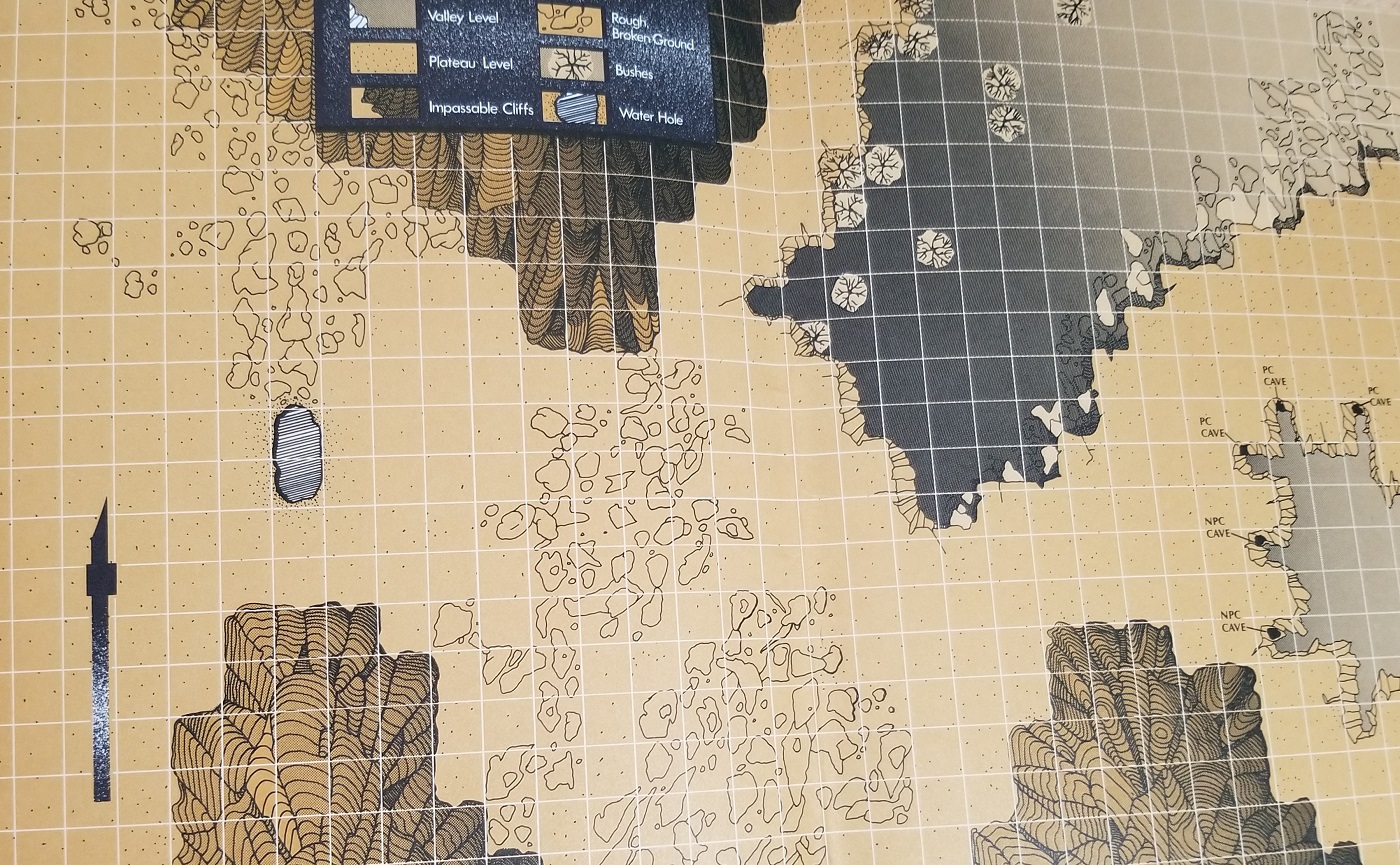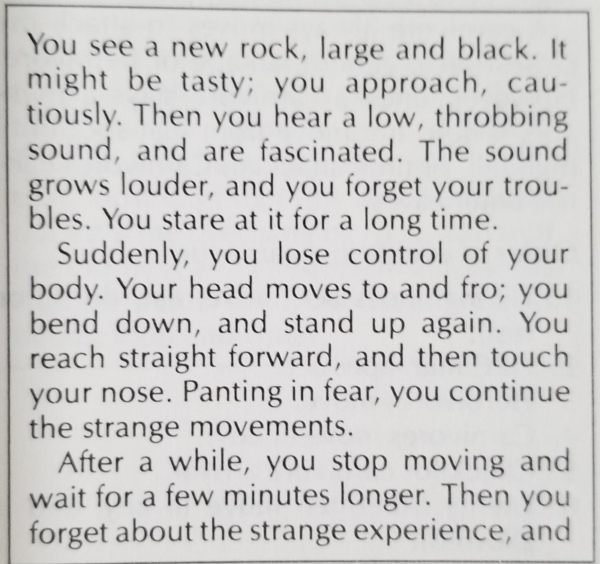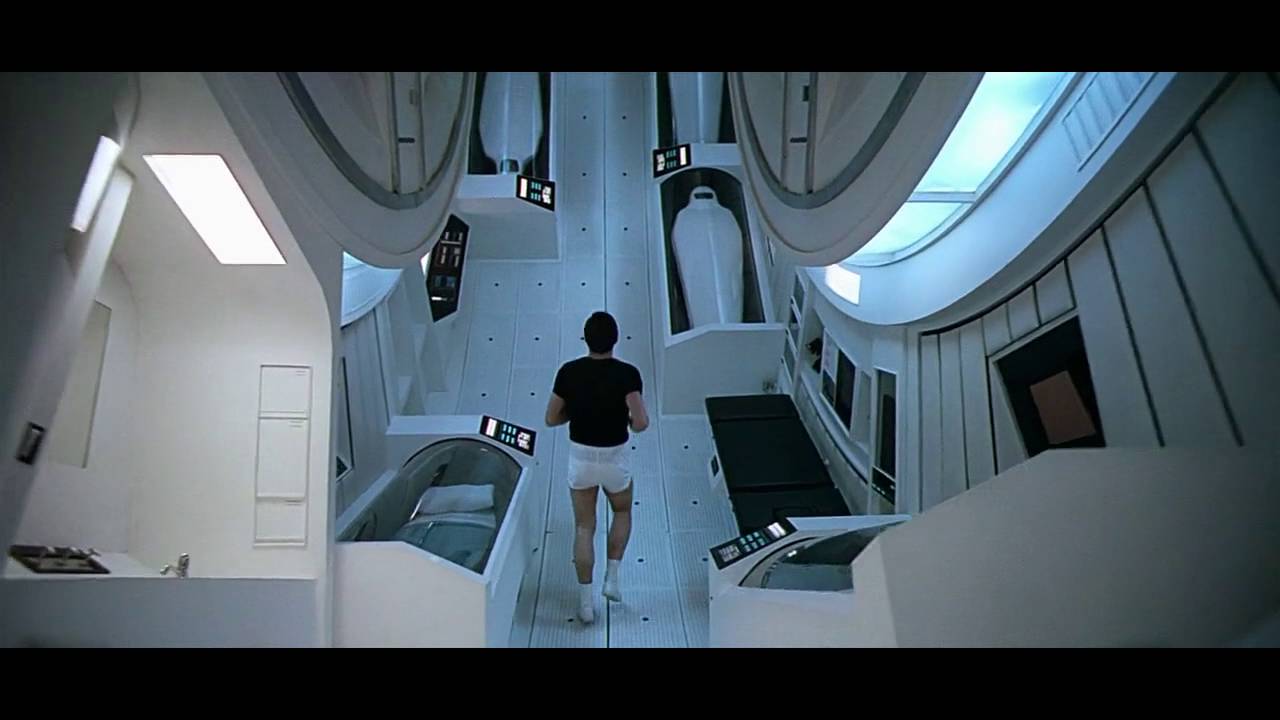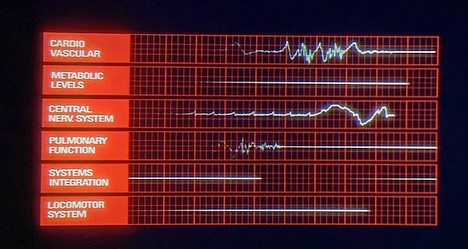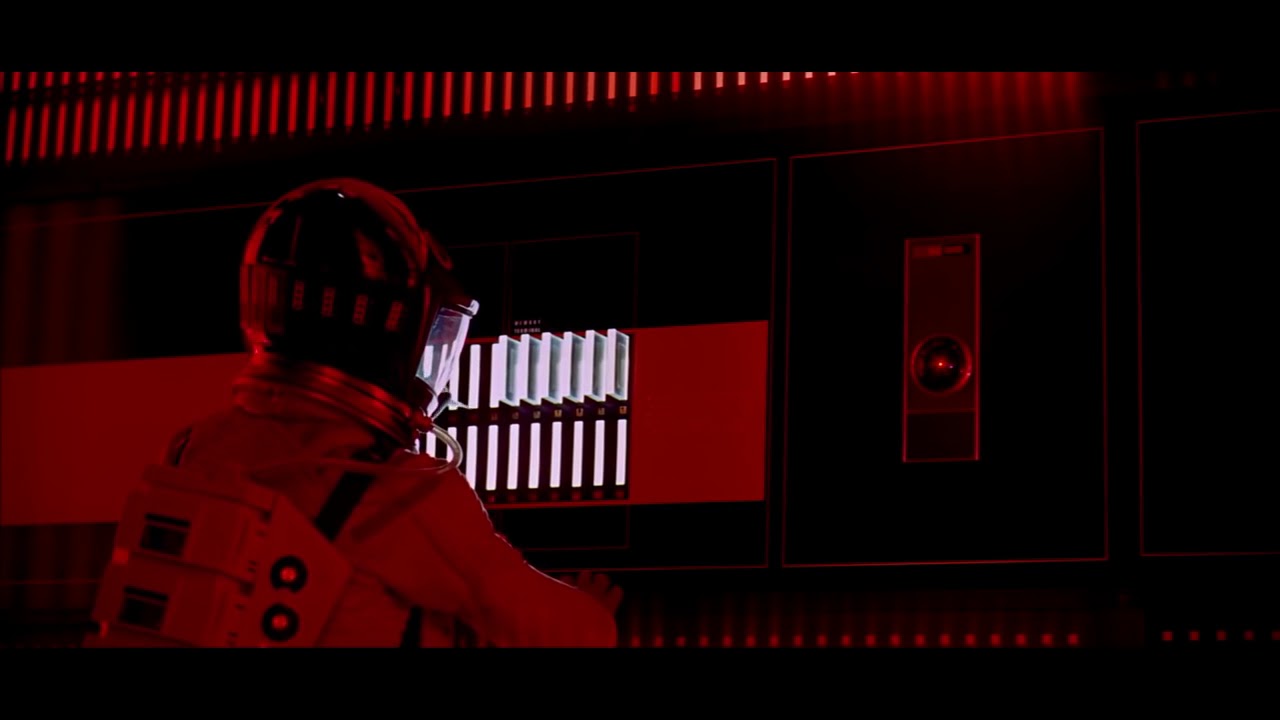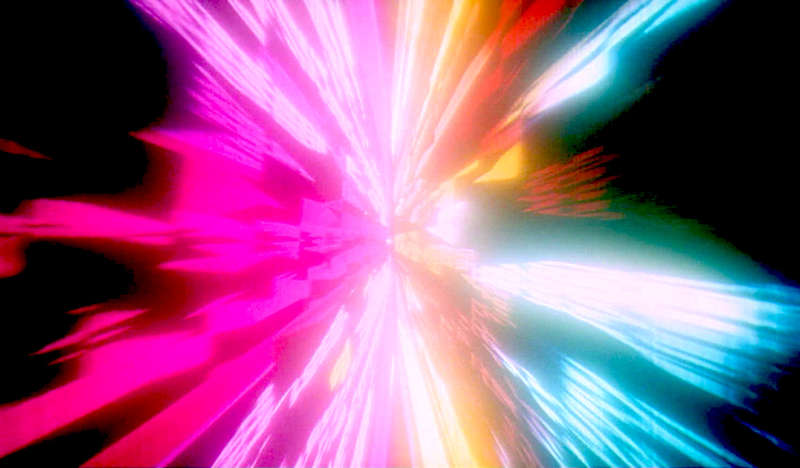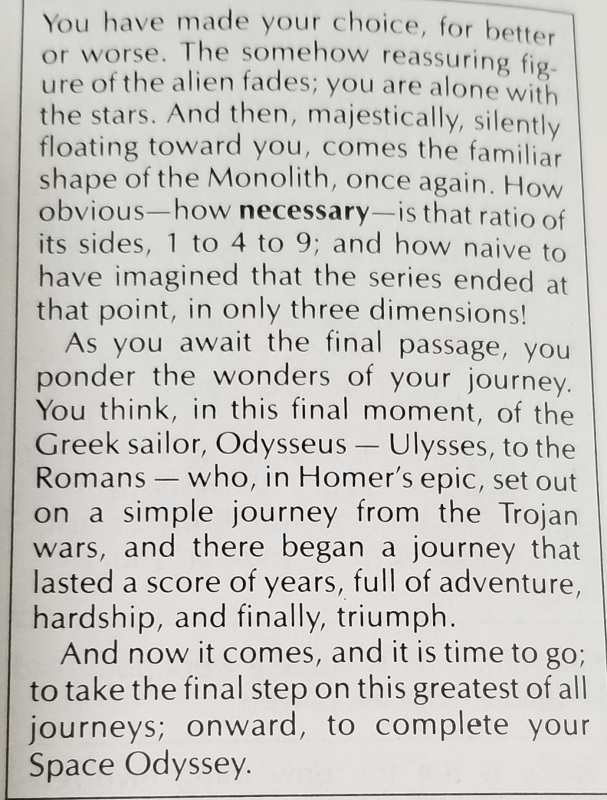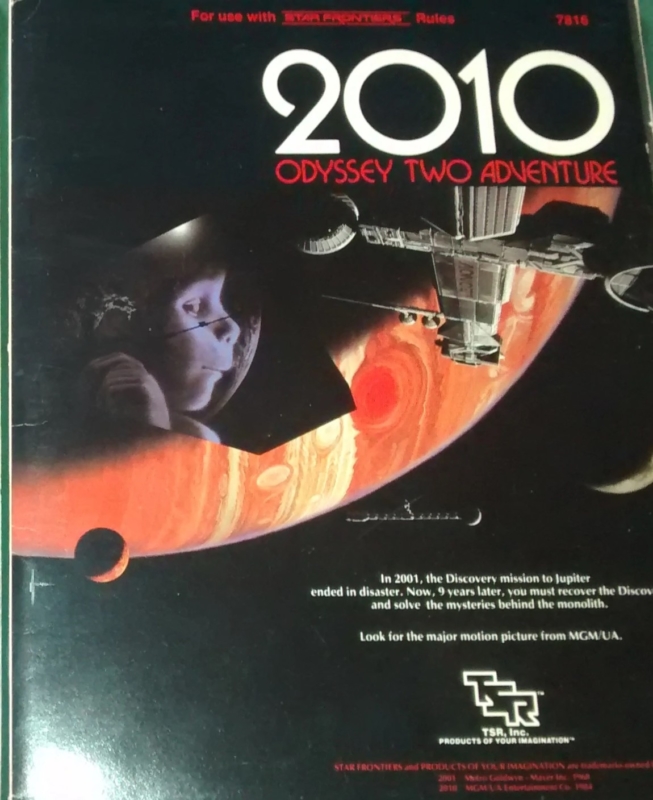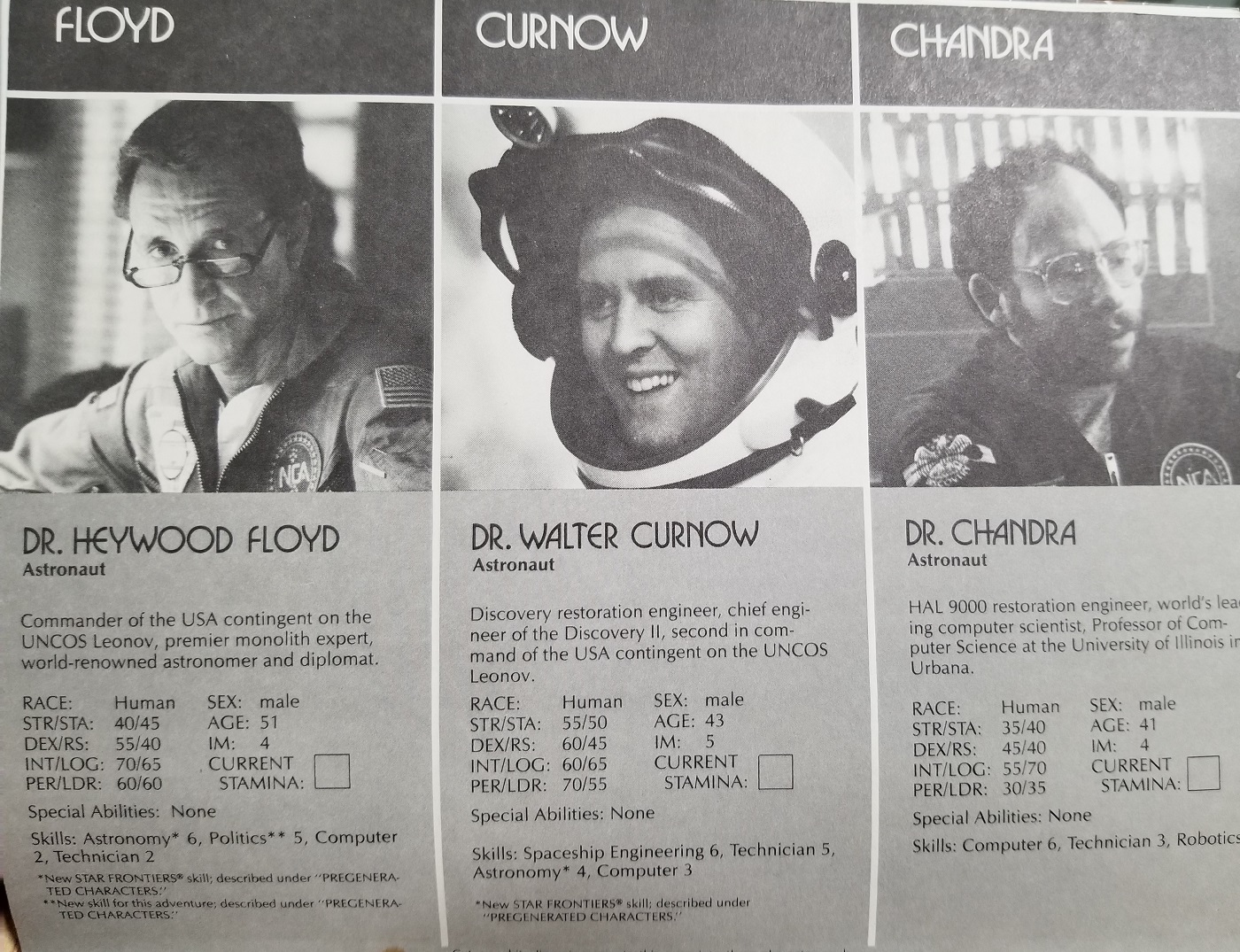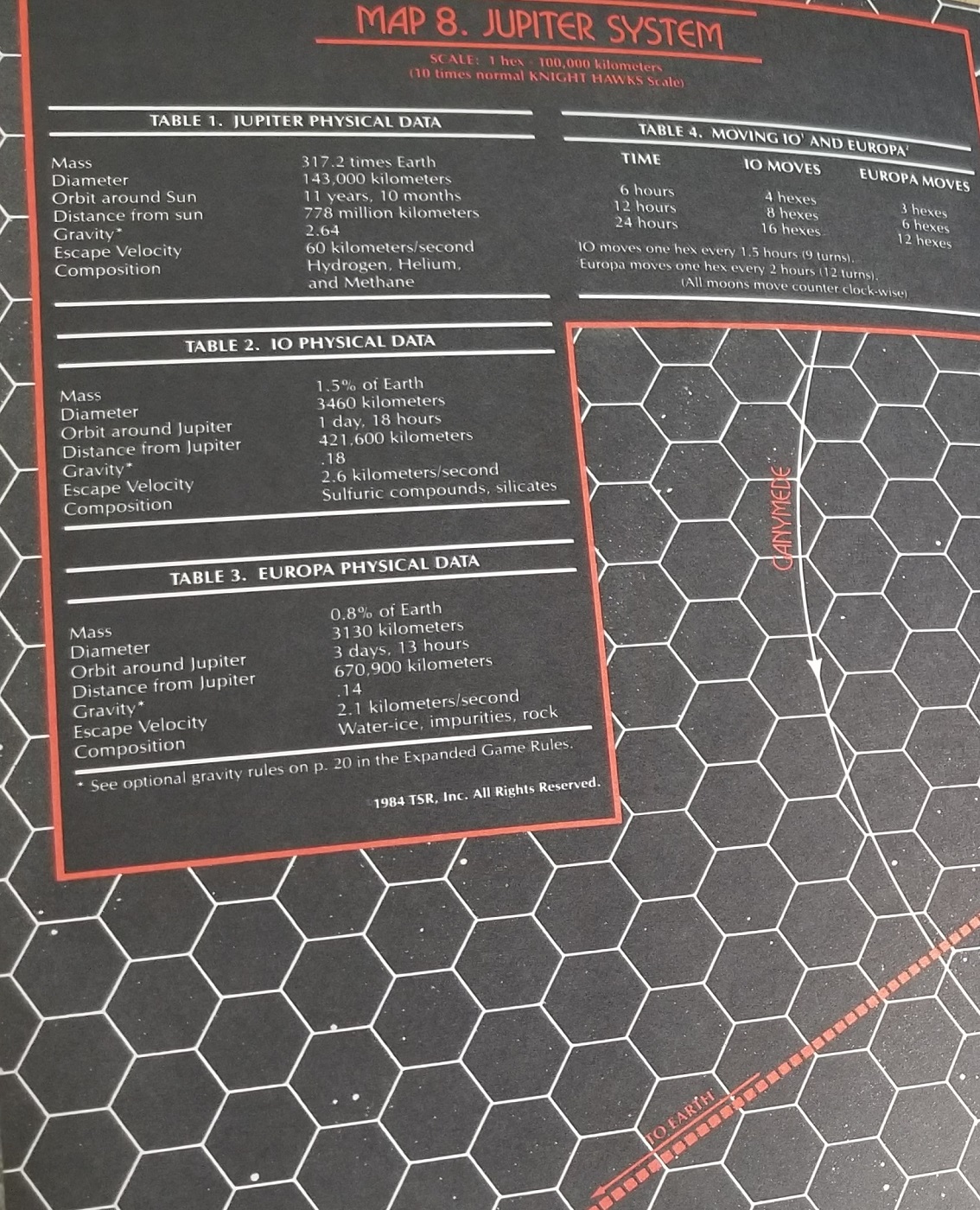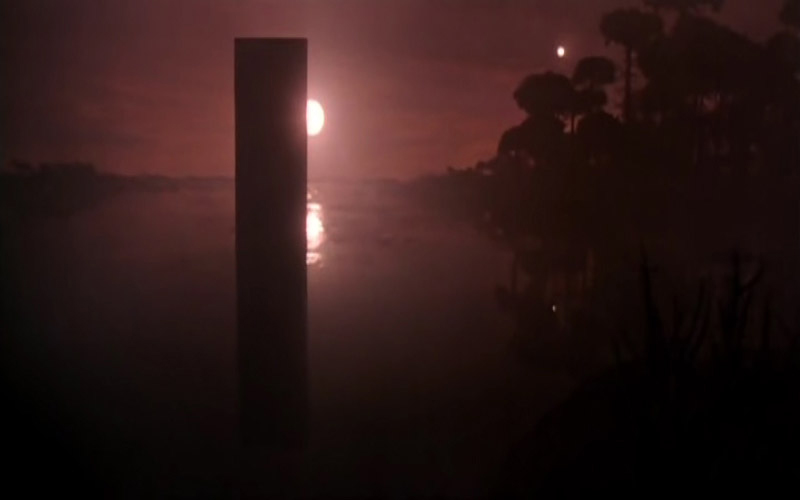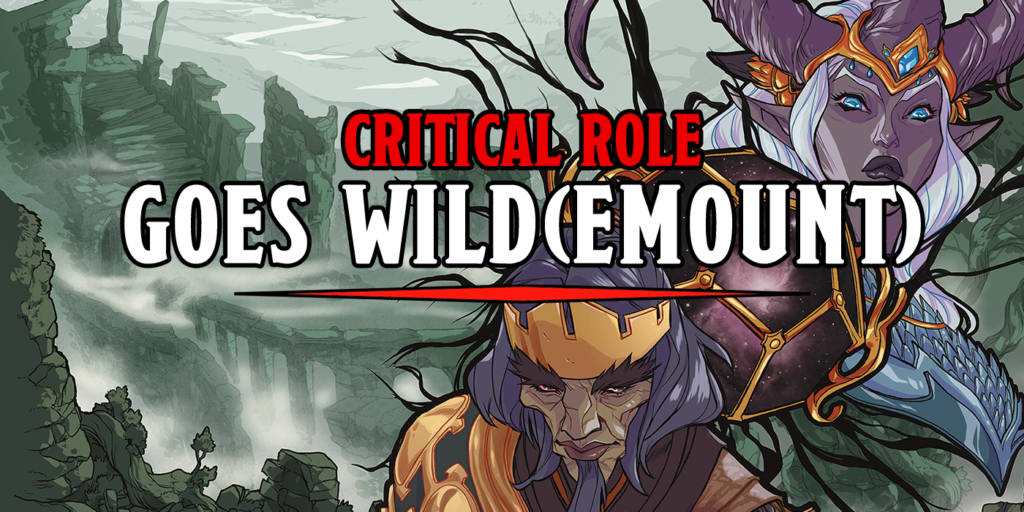TSR’s Most Unlikely Modules: 2001 And 2010
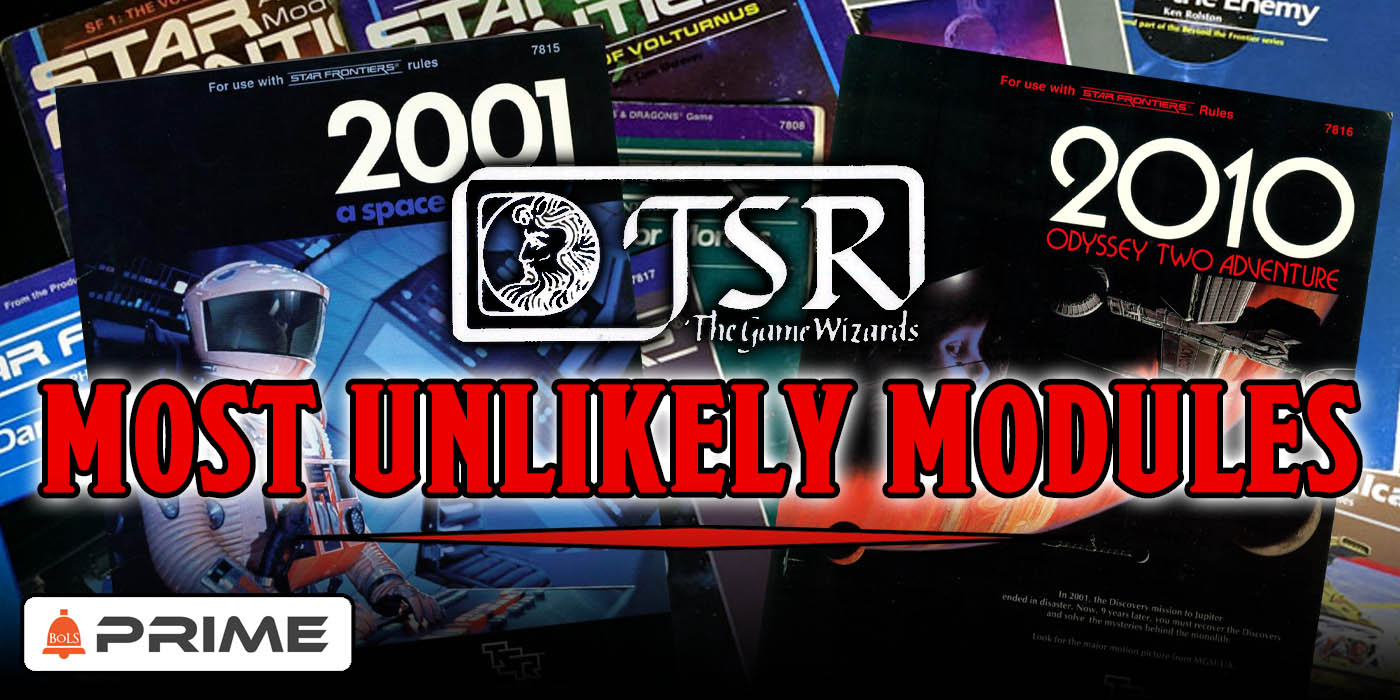
Open the pod bay doors, because we’re going to take a look at two of the strangest modules ever created by TSR: 2001 and 2010, the year we make contact.
TSR has a checkered past with the movie industry. Whether we’re talking about the early forays that Dungeons and Dragons made into the world that lived and breathed in an age undreamed of–between the time when the oceans drank Atlantis, and the rise of the sons of Aryas. If you haven’t read about how TSR took D&D into Robert E. Howard’s Conan stories, it’s worth checking out. But those two were perfect fits for the wargaming company. Stranger products still would emerge from the dealings of TSR West–Indiana Jones, and then the subject at hand. Two modules that tied in with the release of Stanley Kubrick’s adaptation of Arthur C. Clarke’s 2010: The Year We Make Contact. TSR set out to cover both movies as two distinct modules, and what follows are some of the rarest and weirdest modules you’ll ever read. Come take a look.
First things first, let’s set the stage. It is the early 80s and Gygax is going West.
Gygax and the Silver Screen
TSR’s story is a strange one. The company that launched the world’s most popular roleplaying game barely made it past the starting gate. In its initial early days, Gary Gygax and a partner invested money to get the company going, when their potential for growth blossomed but the company hit some financial trouble, Gygax had to partner another individual, bringing the co-ownership of TSR to three. This would ultimately lead to Gygax’ ouster from TSR and the launch of 2nd edition. But for now, just know that TSR is feuding with itself and an imbalance of power meant that frequently Gygax would have to go along with the decisions of his partners, Brian and Kevin Blume. Gygax was bitter about it.
“The fact is, though, that there were three persons on the Board of Directors of the company – Brian Blume, Kevin Blume and me. Similarly, while I was the President and CEO, Brian placed himself in charge of creative affairs, as President of that activity, while Kevin was President of all other operations. This effectively boxed me off into a powerless role. If a ‘President’ under me did something I didn’t like, my only recourse would be to take the matter to the Board of Directors where I would be outvoted two to one.”
“I have spoken earlier of the structure that the Blumes imposed on TSR in 1981. As another example of things before then, late 1979 or early 1980, I issued some instructions. When Brian heard what I had ordered he shouted loudly for all to hear: «I don’t care what Gary said. I own controlling interest in this company and it will be done the way I say!». I should have parted ways with TSR then and there, but I still had a lot of loyalty to the company and the vision upon which it had been created. Anyway, from that point on, I had little control, and in general what I desired be done was ignored or the exact opposite was put in place.”
Depending on which story you believe, he either exiled himself or the Blumes exiled him to Hollywood, as a part of TSR Entertainment’s founding. And this section is such an interesting branch–it reflects a goal that modern-day WotC is still exploring: media dominance. At the time, TSR Entertainment existed to pitch D&D shows, be they television or movies.
And to a degree, Gygax succeeded, securing a deal with Marvel Comics to create the Dungeons & Dragons cartoon, which premiered in September of 1983 and ran for three seasons as well as very nearly securing a buyout of TSR altogether. That’s a different story. The other big news to come out of it was the production of several popular film licenses as RPGs. These included Conan, Indiana Jones, and the strangest fit of them all: 2001 A Space Odyssey and its companion module 2010: The Year We Make Contact .
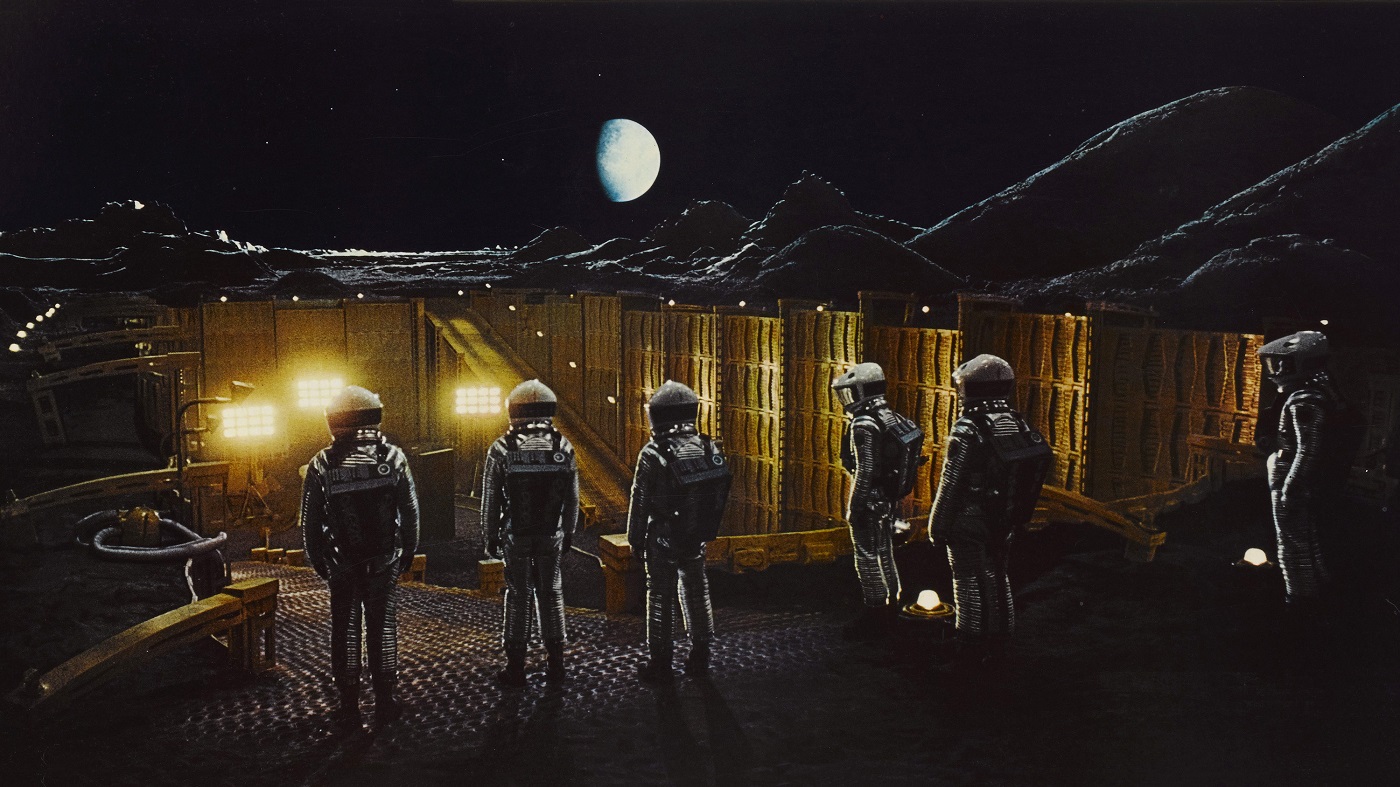
A movie still from Stanley Kubrick’s 1968 science fiction film ‘2001: A Space Odyssey’. (Photo by Movie Poster Image Art/Getty Images)
Now if you’ve never watched 2001, you’re missing out. It’s widely hailed as one of the great sci-fi masterpieces, directed by Kubrick at the height of his game. It’s been deemed culturally significant by the US government, and frequently is at near the top of lists of the greatest movies of all time. Martin Scorsese loves it, your stoner roommate loves the last twenty minutes of it, everyone loves this movie. But when you watch this epic saga, which follows humanity from its dawn as early hominids living on the veldt (whose intelligence is subtly boosted by the presence of an alien monolith that influences the rise of intelligent life on planet Earth) to the rise of the Space Age and beyond, your first thought isn’t, gee I bet that movie that plays on our hopes and fears about the future–including the rise of intelligent machines that we trust to run things without considering how flawed they might be–would make for a killer roleplaying session.
Watching the slow, balletic dance of space ships set to classical music as they float silently through space might be scientifically accurate, but awesome gameplay it ain’t. Sure, there’s a bit in the movie where a mysterious lunar artifact sends a message to somewhere in Jupiter, and that kind of cosmic mystery and investigation shows up routinely in sci-fi RPG adventures even today–but that’s the inciting incident. The meat of the movie is about a group of astronauts coming to terms with their place in the cosmos, both as a species and as a bunch of frail, mortal scientists on a ship controlled by an AI that’s supposed to watch over them, but instead betrays them when it turns murderous. It spoke to a lot of the anxieties of the time, and depending on how you looked at this film, co-created by Kubrick and Clarke with input from everyone’s favorite whale-song enthusiast, Carl Sagan, it’s either a dark apocalyptic vision of the future, or it leaves you feeling hopeful about the years to come.
We’re not sure who saw this movie and thought, yeah what this needs is some complicated game mechanics that try their best to recreate some of these exact moments in a roleplaying game. But someone did, and the module was created. Now, it’s worth pointing out that, at the very least this wasn’t shoe-horned into D&D (though I expect it’s only a matter of time), but rather this was created for TSR’s 1982 sci-fi endeavour Star Frontiers. It’s a fantastic sci-fi RPG whose star burned brightly but brief. And in 1984 with 2010: The Year We Make Contact on the way, these two modules probably seemed like fantastic cross promotion to get those nerd dollars.
But the real question is: how are these modules? Let’s take a look for ourselves.
2001: A Space Odyssey
2001 follows the plot of the movie fairly closely. It’s broken up into four main sections:
- Chapter 1: Dawn of Man
- Chapter 2: Lunar Excursion
- Chapter 3: Jupiter Mission
- Chapter 4: Through the Star Gate
Each section corresponds to a part of the movie, which requires the module to be inventive for better and worse. Let’s talk a little bit about adaptation here. There’s a difference between adapting a work from one medium to another–going from book to movie to video game, for instance, requires you change things up. The best adaptations are inspired by their source material. It can result in some wild new interpretations of what the story is and lead to new discoveries about the meaning and message of a particular work. But in this case, it mostly feels like a theme park ride that players are on.
They are there to explore the events of the movie–and even this sounds incredible. It sounds like a great time, atmospheric sci-fi RPGs are some of my favorite to play. It feels like this module was just a bit early for where it wanted to be. If it were written now, it might be a collection of four distinct games that all try and evoke the feeling and themes of the movie.
Instead this module starts off with the same adventure module opening screed that you’d expect. It talks about how you might adapt the game to fit some of the other races of Star Frontiers, and explains that this module is set in Earth’s past, possibly centering around one of the corporations that would evolve into one of the central entities in Star Frontiers proper. And to the credit of how this module was created, it does experiment within its own confines.
Players begin as a tribe of early hominids, living on the map. Over the course of a few game days, they can explore and hunt down herbivores, wrangle with carnivores and enemy tribes, and in general try and survive. It’s presented very much like a wargame with limited units and tokens. Once the black monolith from the story shows up, it increases the intelligence of PCs who happen to find it, granting them increased abilities and making them better at the wargame, at which point the goal changes from survive to conquer the map. It’s not necessarily what the point of the scene was, but it’s trying. Even if the writing for his part is… well:
Then we leave the dawn of humanity behind and travel to the distant future in the year 1994, when the players take on the role of spacers who are assigned to travel to the lunar surface and look for a strange anomaly that’s been discovered there. This again takes the beats of the movie and gamifies them, giving players another exploration/wargame mini-game that has them exploring the map in search of a radio signal. Ostensibly there’s room for intrigue as some of the players might be contacted by a Chinese or Russian agent, and the PCs are nominally competing against their counterparts from a Chinese mission to find the anomaly first.
But this largely seems to be an afterthought, there’s no way for the PCs to lose–this section can only unfold with them finding the anomaly and activating it, leading us to the biggest chunk of this module: the Jupiter Mission.
Complete with deckplans for the Discovery, this section is as faithful a recreation of the movie as can be, which leads to some interesting moments when the text tries to explain exactly what HAL is while still establishing the parts of the movie that haven’t been revealed yet. It’s an excellent lesson in what writing for an audience that may not be familiar with your source material is like. Players take on the role of characters from the movie and are given the same mission: go to Jupiter and explore. They aren’t told of the lunar monolith, only HAL, the ship’s AI knows this. It leads to HAL becoming convinced that the other members of the crew aren’t necessary and should be killed.
And this could make for a very interesting game, if not for the fact that the module spends more time recreating the beats of the movie and finding ways to put in ‘filler’ than actually exploring what the story about. There are a lot of rules for how to repair things that go wrong on the ship, and there’s a schedule, lifted straight out of the film, of activities to do–but there’s never any question of why they might want to do these things. Nor is there a sense of creating mystery for the players to explore. It’s just ‘go here, do this, now go here.’
Which is a shame, because there’s a lot of potential buried in this module. The play between the AI whose reason is slowly fading and the desperate struggle of the crew is relegated to a few skill checks and largely dictated by the events of the movie. Even Chapter 4: Go Get Your Stoner Roommate loses out on some of the questions that could be uniquely explored by an RPG to just try and recreate being a movie.
It’s the same problem you get with video games that want to be movies–many of them spend a lot of time trying to add game mechanics to recreate movie moments without stopping to understand what you get out of doing it. Chapter 4 is a fantastic lesson in this–it’s basically one long cutscene where the players are given a choice of whether to enter the massive monolith that hides in Jupiter’s orbit in a work pod or on their own. Then they’re sent through the star gate to the final room…
…and there the game gives you a few endings to pick from, and it’s basically Mass Effect 3 all over again. Pick one ending and go from there. There’s a lot that they could have done, but instead the end result falls a little flat. Still, it’s an interesting artifact of its time.
2010: Odyssey Two Adventure
2010: Odyssey Two Adventure is in a similar boat, but it’s a much better executed boat. Perhaps this is because the structure of the film lends itself more towards the tension and objective-driven gameplay that unfolds in the module. It too follows the plot of the movie, with players taking on the roles of the American astronauts in the movie: Heywood Floyd, Walter Curnow, and Dr. Chandra.
Once again the players find themselves embarking once more on a mission to Jupiter, following in the footsteps of 2001: A Space Odyssey. The mission text is a little more evocative, and sets the stage for the players to go on a tense mission that relies on the cooperation of both US and Soviet astronauts to get to the derelict vessel that is the Discovery:
In A.D. 2001 the United States of America found a 3.4-meter-high monolith on the moon. The monolith had obviously been produced by alien technology and placed on the moon for mankind to discover. When sunlight struck its surface, the monolith sent a mysterious radio signal to Jupiter.
The United States immediately launched the spaceship Discover toward Jupiter to find out who (or what) received the radio signal. The Discovery carried the most advanced computer ever built, called HAL. During the trip, however, HAL went insane and killed everyone on board but the captain before finally being shut down. When David Bowman, the captain of the Discovery, arrived at Jupiter, he found a huge, 2-kilometer-long monolith in orbit around Io, one of Jupiter’s moons. Except for its size, the monolith was identical to the one on the moon near Earth.
Bowman used a work pod to explore the mysterious monolith. His liast transmission before disappearing forever was, “My God, it’s full of stars!”
A few year later, the United States began to build another ship, the Discovery II. Its mission was to be to travel to Jupiter and find out what happened to the Discovery and its crew and explore the monolith. The Discovery II is still several years from completion.
However, the Russians have completed their own spaceship, the Leonov. The Russians are sending the Leonov to Jupiter to explore the monolith.
The United States government has asked each of you to accompany the Russian spaceship to Jupiter. Your mission objectives, in order, are:
- Rendezvous with the Discovery and retrieve any data in HAL’s memory banks
- Reactivate the Discovery and bring it back to Earth
- Investigate the nature and purpose of the alien artifact called “the monolith.”
- Survey and explore Jupiter and its moons.
The adventure that follows is similarly broken up into four chapters. The journey starts on board the Leonov, and gives the players some sample tasks and scenarios to complete as they make the long journey out towards where the Discovery waits. A few problems might happen–they can detect anomalies coming from one of the moons, Europa, or strange radio transmissions that are organized but indecipherable. There’s a lot of setting the atmosphere in this section, giving players the chance to explore the moons with a probe and then presenting players with the problems that arise in the movie.
After aerobraking, a dangerous maneuver that might well kill the party, the players are invited to explore the Discovery and are given a set of different tasks that require the strengths of each of the pre-generated characters to fully repair. If you have the opportunity to check it out, it’s an excellent example of how you might play out a more realistic salvage mission in any sci-fi RPG.
The whole ship is considered a problem broken down into a few main problems that require mandatory repairs:
- Restart the atomic engine
- Stop the Discovery’s tumbling
- Move the Discovery out of its dangerous Orbit
- Repair power generators
- Repair the Life Support system
- Repair HAL
These can be completed in various orders. PCs might be able to figure out what makes it easier for them to figure out. There are also minor repairs to make as well that can make their lives easier–it’s easily broken down by task so that you have a clear idea of what to do–and what the consequences might be for failure. Failure doesn’t necessarily mean progress is halted, it just sets up further complications for the players.
This whole subsection is where the game feels at its most RPG-y. Players are exploring a derelict vessel, moving around on a map, looking for parts, making skill checks, and with a very clear motivation for doing so. Every now and then tensions with the Russians might crop up, but by and large they are friendly. Each of the rooms on the ship is well-documented, so there’s always something interesting for players to find. It’s an Exploration DM’s dream.
Following the beats of the movie does force the module to move along. They will eventually find the monolith, and this makes for some of the more railroady parts of the module. Players can experiment on it, rolling random effects until David Bowman, now an energy being, appears before them to do things. From here on out, the players are given the rest of the plot of the movie–tensions between the United States and the Soviet Union have flared up on Earth and the mission controls of their respective space programs want the crew to react accordingly. Players are given some control and may decide to cooperate or not.
It doesn’t matter though, the crux of this section is to give the players one last task–escape the monolith, which requires their cooperating with the Russians once more, and if successful they are rewarded with the last half hour of 2010 the movie.
Both of these modules represent the design ethos of the time. And while they still bear the flaws of their time, it marks an interesting experiment and wild departure from the norm for TSR. It would be interesting to see what a more modern take on these modules would do–but in the meantime, let’s leave these relics in the past, where the Earth is experiencing two suns rising.
All these worlds are yours–except Europa. Attempt no landings there.

